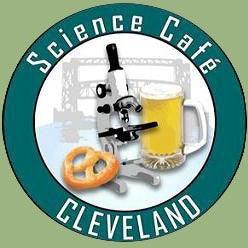Science Café Cleveland presents
2011 Annual Distinguished Lectureship
"Patchy Micelles, Phase-Shifting Peptides and Nanolayer Assemblies for Tailored Delviery"
NOVEMBER 3, 2011
FEATURING:
PAULA HAMMOND
Bayer Professor of Chemical Engineering, Massachusetts Institute of Technology,
Department of Chemical Engineering

EVENT INFORMATION:
Electrostatic and secondary interactions of polyelectrolytes and amphiphilic block copolymers can be used to generate new drug and gene delivery systems capable of controlled release via passive or triggered release. Our research group utilizes these interactions in 2D and 3D to develop new methods of controlled delivery and routes to biomaterials. The manipulation of the solution assembly behavior of new amphiphilic and charged linear dendritic block copolymers, and their use as gene and drug carriers and in novel biomaterials systems will be described. We explore the role of cluster presentation of ligand on patchy micelles generated by the self-assembly of linear dendritic block copolymers. On the other hand, we have also developed a series of polypeptides with helical backbones that are readily modified using click chemistry. The sidegroups of these polyaminoacids can be modified with a broad range of side groups, from hydrophobic alkyl groups to polyethylene oxide and charged acidic or basic groups. These polypeptides and their block copolymers can be tuned for the condensation of DNA and siRNA, and exhibit reversible pH dependent transitions that are currently under study for the design of responsive nanoparticles for delivery of genes and other charged materials, or the generation of polypeptides that mimic the function of biologically derived macromolecles.
Finally, the alternating adsorption of oppositely charged molecular species, known as the electrostatic layer-by-layer (LBL) process, is a simple and elegant method of constructing highly tailored ultrathin polymer and organic-inorganic composite thin films. We have utilized this method to develop thin films that can deliver proteins and biologic drugs such as growth factors with highly preserved activity from surfaces with sustained release periods of several days; manipulation of the 2D composition of the thin films can lead to simultaneous or sequential release of different components, resulting in highly tunable multi-agent delivery (MAD) nanolayered release systems. We have investigated the use of these nanometer to micron thick films as orthopedic implant coatings, matrices for tissue engineering and wound healing, and transdermal vaccine delivery. We demonstrate that the time frame and nature of release is determined by the nanolayer architecture and degree of interdiffusion between film components. Finally, we have also used dynamic LbL layers on a nanoparticle to generate a stealth outer corona layer that ‘sheds’ at the lower pH of hypoxic tumors; this step reveals positively charged nanoparticle surfaces that are rapidly taken up by tumor cells. We translate this approach to systemic delivery of nanoparticles with the use of LbL layers that act as highly effective, and in some cases pH responsive, stabilizing layers for nanoparticles to yield long distribution times.
EVENT DETAILS:
November 3, 2011
12:00 - 1:00 pm
Wickenden Building, Room 322






